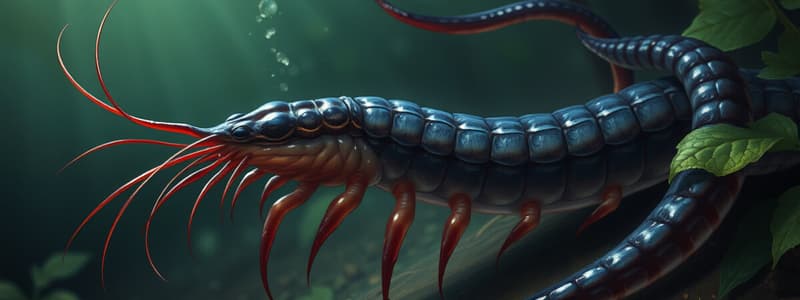Podcast
Questions and Answers
What does 'meaning' refer to in the context of Class Hirudinea?
What does 'meaning' refer to in the context of Class Hirudinea?
No setae or parapodia.
Which animals are included in Class Hirudinea?
Which animals are included in Class Hirudinea?
- Leeches with a sucker (correct)
- Worms without suckers
- Amphibians
- Fishes
How do leeches feed?
How do leeches feed?
They are carnivores that feed on small invertebrates and some are parasitic, sucking blood from animals.
A leech can ingest up to ______ times its own weight in blood.
A leech can ingest up to ______ times its own weight in blood.
Parasitic leeches secrete an anesthetic to allow them to feed without detection.
Parasitic leeches secrete an anesthetic to allow them to feed without detection.
Leeches have setae and parapodia.
Leeches have setae and parapodia.
Flashcards are hidden until you start studying
Study Notes
Class Hirudinea
- Characterized by the absence of setae or parapodia, distinguishing them from other annelids.
Leeches
- Group includes various types of leeches with a sucker that facilitates attachment to surfaces, giving them their unique feeding ability.
Feeding Habits
- Primarily carnivorous, feeding on small invertebrates; some species are parasitic and feed on the blood of animals.
- Parasitic leeches possess specialized adaptations:
- They secrete an anesthetic to prevent the host from sensing their presence.
- They produce a non-coagulant substance to stop blood from clotting, allowing for efficient feeding.
- A leech can consume up to ten times its own body weight in blood during a feeding session.
Studying That Suits You
Use AI to generate personalized quizzes and flashcards to suit your learning preferences.



